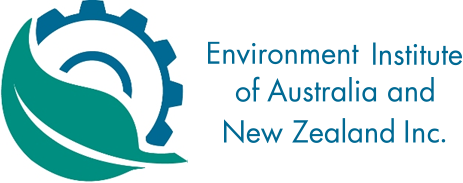-
Member Login
- Home
- About
- Institute Groups
- Membership
- Events
- News & Publications
- Institute Programs
- Resources
- Jobs Board
- Contact Us
- Site Info
2023 Federal Budget: Summary for members
The department’s vision is an Australia that is prosperous because it is sustainable, with community and Country at the heart of our actions.
As at 1 April 2023, the Climate Change, Energy, the Environment and Water Portfolio employed 4,012 staff under the Public Service Act 1999.
Climate change and energy
This Budget settles the final design of the $1.9 billion Powering the Regions Fund and allocates $600 million to the Safeguard Transformation Stream, $400 million to the Industrial Transformation Stream, and $400 million to the Critical Inputs to Clean Energy Industries grant program. This will support industrial decarbonisation, develop new clean energy industries, and build skills and workforces, with a focus on the regions.
The department will work closely with the newly established National Net Zero Authority in ensuring that the regions that have always powered Australia will power it into the future.
This Budget takes meaningful steps to support Australia’s ambition to become a renewable energy superpower. An investment of $2 billion will support strategic hydrogen projects to allow Australia to be an early mover.
The department will support more sustainable and affordable energy choices by households through a Household Energy Upgrades Fund.
The Budget provides funding to implement the Chubb review recommendations and to implement the reforms to the Safeguard Mechanism.
The department will deliver the Government’s commitment to transition to 82% renewables by 2030. Building on the December 2022 Energy Ministers Meeting agreement, the department will implement a staged delivery of the Capacity Investment Scheme which involves the Government underwriting revenue in clean dispatachable renewable generation and storage capacity.
The department will accelerate the roll out of offshore renewable energy in Australia
The department will deliver a National Climate Risk Assessment and scope an Adaptation Plan to better manage Australia’s climate change risks.
The department is leading the work supporting Australia’s ambition to host the 31st session of the Conference of the Parties of the United Nations Framework Convention on Climate (COP-31) in 2026, together with Pacific nations.
Environment and water
The department will implement the Government’s Nature Positive Plan, our commitment to protect 30% of Australia’s land and seas by 2030, and work towards no new extinctions. Australia will join the Leaders’ Pledge for Nature, committing to reverse nature loss by 2030.
The department will establish Environment Protection Australia to better enforce Commonwealth environment laws.
The Government will establish Environment Information Australia to improve the quality, integration and accessibility of environmental data and information held by governments, the private sector, researchers and scientists.
The department will play a central role in the reform of Commonwealth environment laws, including consulting on National Environmental Standards.
The department will also update guidance and strategic priorities for protecting more than 2,000 listed threatened species and ecosystems to halt environmental decline and repair nature.
The Indigenous Advisory Committee, established under the Environment Protection and Biodiversity Conservation Act 1999, will be enhanced to give First Nations peoples a stronger voice.
A National Environmental Standard for First Nations engagement and participation in decision-making will be developed as a priority.
Our First Nations partnerships will include co-designing better cultural heritage protection laws, which will ensure cultural heritage is identified and protected early.
A well-functioning nature repair market will make it easier to invest in projects to protect, manage and repair nature. A new Nature Repair Market Committee will provide assurance to the public and to investors on the integrity of projects and value of nature positive investments.
Providing $262.3 million for national parks such as Kakadu will preserve the status of our World Heritage sites, support tourism, and manage critical safety risks.
The Australian Institute of Marine Science will receive $163.4 million to maintain its role as a world leader in marine science, sustaining Australia’s $118 billion blue economy, strengthening ocean health, and protecting coral reefs for our future generations.
Implementing the next phase of the Natural Heritage Trust will deliver practical on-ground action to safeguard Australia’s natural assets and enhance biodiversity, such as managing weeds and feral animals. $439.2 million will support programs that repair World Heritage properties, restore Ramsar wetlands, and conserve threatened species and ecosystems.
The Budget includes $118.5 million over six years for the next phase of the Government’s $200 million Urban Rivers and Catchments Program.
This Budget includes $148.6 million to ensure a healthy, vibrant and sustainable Murray-Darling Basin into the future. The Murray-Darling Basin Authority will undertake the first statutory review of the Basin Plan, including extensive community consultation.
The Budget will provide funding of $197.1 million for critical water infrastructure for regional Australia, delivering on the broader investment remit for the National Water Grid Fund.
We acknowledge and value the rights and interests of Indigenous Peoples in the protection and management of environmental values through their involvement in decisions and processes, and the application of traditional Indigenous knowledge.

